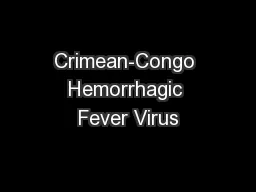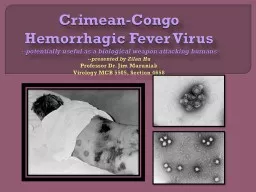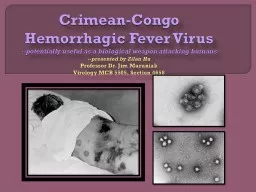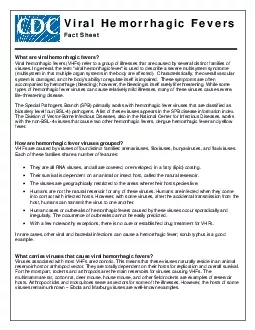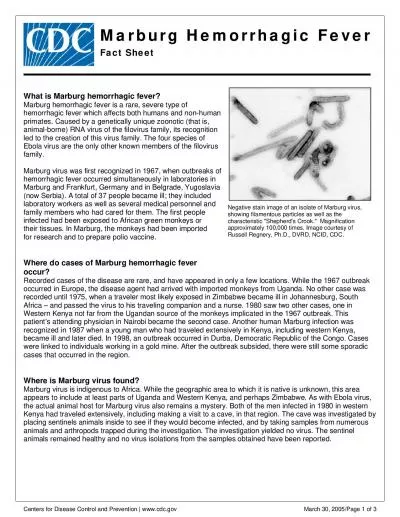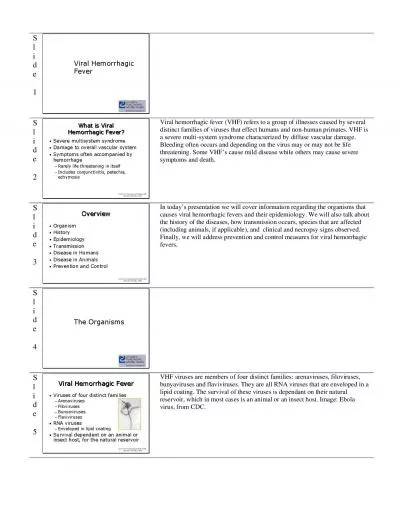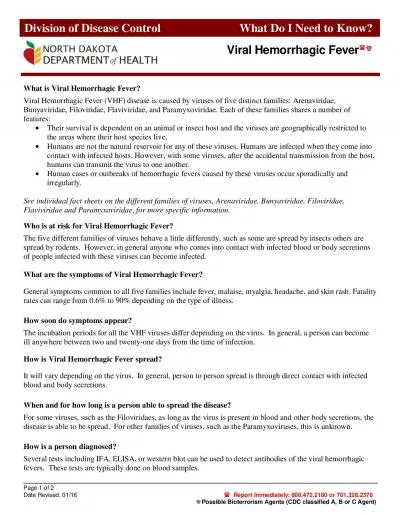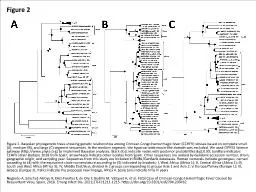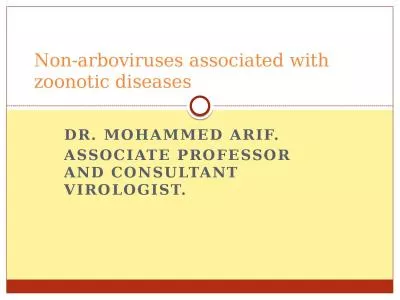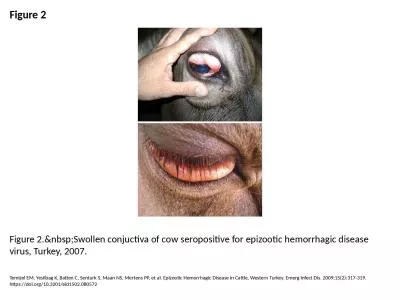PPT-Crimean-Congo Hemorrhagic Fever Virus
Author : aaron | Published Date : 2019-02-02
potentially useful as a biological weapon attacking humans presented by Zilan Hu Professor Dr Jim Maruniak Virology MCB 5505 Section 4658 Introduction CrimeanCongo
Presentation Embed Code
Download Presentation
Download Presentation The PPT/PDF document "Crimean-Congo Hemorrhagic Fever Virus" is the property of its rightful owner. Permission is granted to download and print the materials on this website for personal, non-commercial use only, and to display it on your personal computer provided you do not modify the materials and that you retain all copyright notices contained in the materials. By downloading content from our website, you accept the terms of this agreement.
Crimean-Congo Hemorrhagic Fever Virus: Transcript
Download Rules Of Document
"Crimean-Congo Hemorrhagic Fever Virus"The content belongs to its owner. You may download and print it for personal use, without modification, and keep all copyright notices. By downloading, you agree to these terms.
Related Documents

